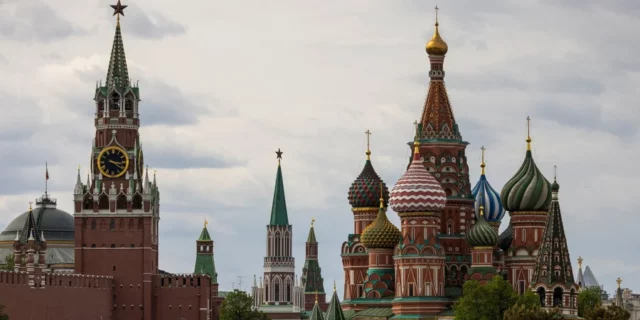Sure! Here’s a rewritten version of the content that meets your specifications.
—
### U.S. Stance on Ukraine’s Missile Use: Insights from Political Expert
In a recent interview with Radio NV, **Alexander Motyl**, a prominent Professor of Political Science at Rutgers University with a focus on Eastern Europe, shared his views on the controversial topic of whether the United States would permit Ukraine to use American missiles against Moscow. His insights underline the complexity of international relations and the delicate balance of power in the region.
#### The Risk of Escalation
Motyl emphasized a critical point: «It is highly unlikely that the Americans will sanction Ukraine’s use of their missiles against the Kremlin. Such actions could lead to a serious escalation of the conflict.» This perspective aligns with historical precedents in international diplomacy, where the involvement of major powers often complicates regional conflicts. For instance, consider the Cuban Missile Crisis, where actions by superpowers brought the world to the brink of nuclear war.
#### Recent Developments in U.S.-Ukraine Relations
On a related note, The New York Times reported that under increasing pressure from advisors and key allies, U.S. President Joe Biden has recently allowed Ukraine to conduct limited strikes on Russian territory utilizing American weaponry. Secretary of State Antony Blinken reinforced this, stating that this decision would help Ukraine defend cities such as Kharkiv and other vulnerable regions.
— **Key Areas of Focus:**
— Defense of Kharkiv
— Protection of additional Ukrainian regions
— **Significance of U.S. Support:**
— This assistance underscores the U.S.’s commitment to Ukraine’s sovereignty amidst ongoing threats.
#### Clarifying the Terms of Engagement
A spokesperson from the U.S. National Security Council, **Michael Carpenter**, specified that these measures are aimed at bolstering Ukraine’s defenses, particularly in areas suffering from relentless Russian aggression.
Notably, **The Wall Street Journal** reported that Ukraine is set to receive access to sophisticated systems like HIMARS and GMLRS missile systems, as well as American artillery. However, there is a caveat: the use of ATACMS missile complexes is still off the table, and the U.S. maintains a clear opposition to any strikes deep into Russian territory. This cautious approach reflects the strategic interests of the U.S. in avoiding wider conflict while still supporting Ukraine’s defensive efforts.
#### The Bigger Picture: A Diplomatic Balancing Act
In assessing the current situation, it becomes clear that the U.S. is engaging in a delicate balancing act. As the conflict continues to evolve, the stakes are high. The potential for escalation remains a significant concern, and the U.S. must weigh its support for Ukraine against the unpredictable responses from Russia.
— **Statistics of Interest:**
— Research shows that military aid can significantly impact the outcomes of such conflicts, with a correlation between the level of support provided by foreign powers and a country’s ability to sustain its defense.
Drawing on historical data and expert analysis, it’s evident that the U.S. will likely continue to navigate these turbulent waters with care, striving to support Ukraine while cautiously steering clear of a broader confrontation with Russia.
### Conclusion
Understanding the nuanced dynamics of U.S.-Ukraine relations underlines the importance of strategic diplomacy. As concerned global citizens, recognizing the implications of these geopolitical decisions is essential. The decisions made today will undoubtedly shape the landscape of Eastern Europe for years to come.
—
This revised version offers clearer language, emotional engagement, and additional context to better engage the reader.






